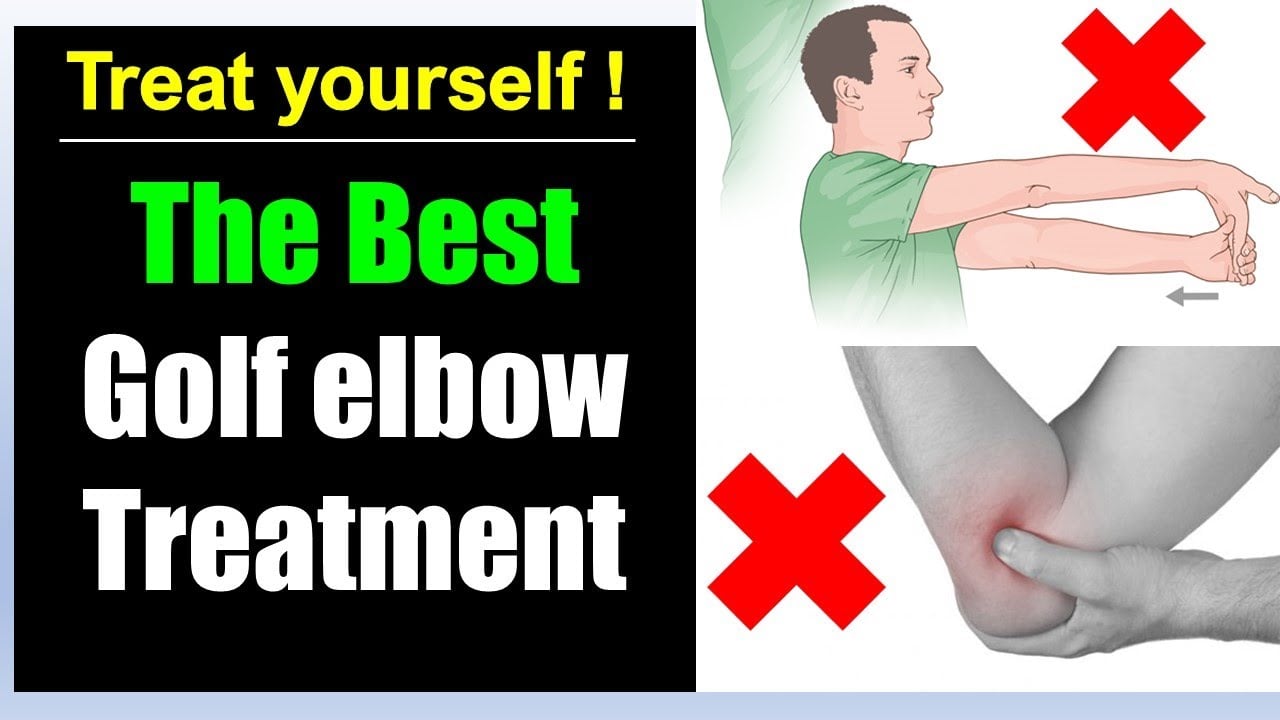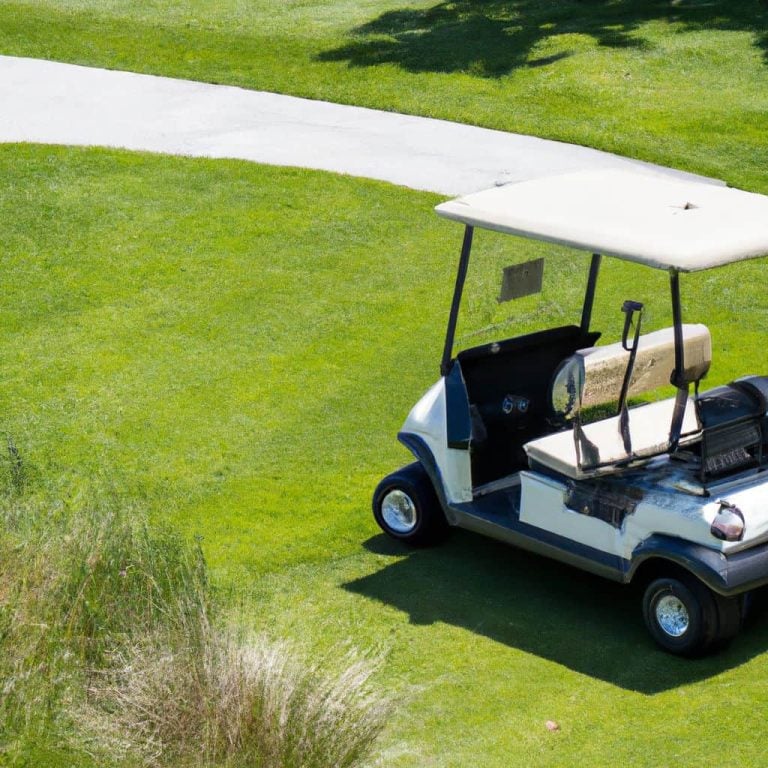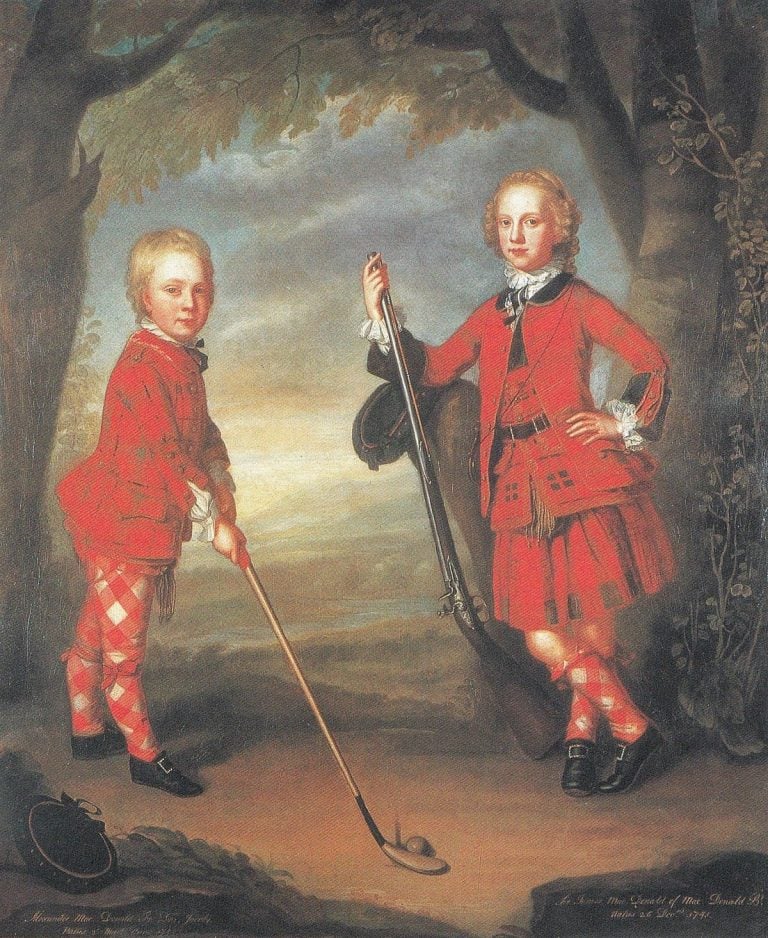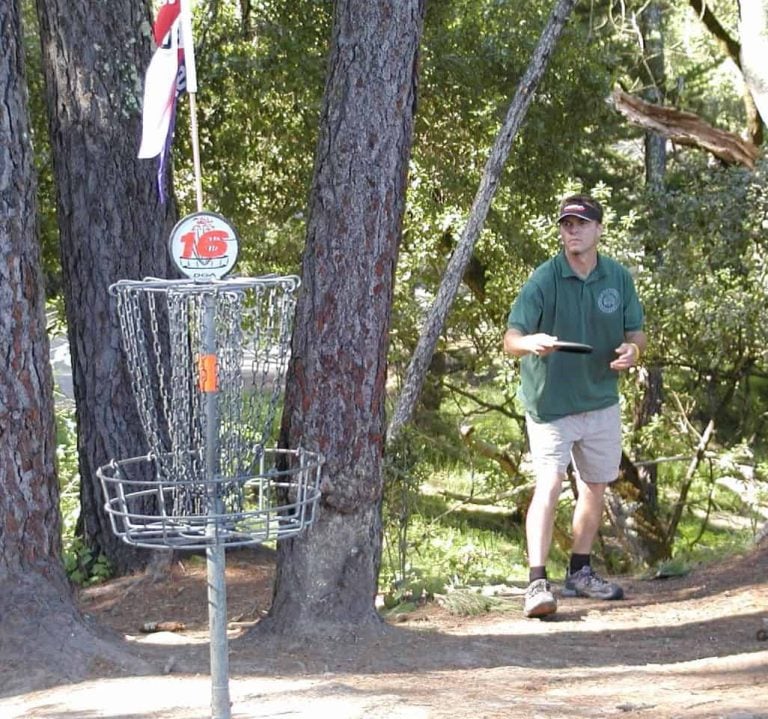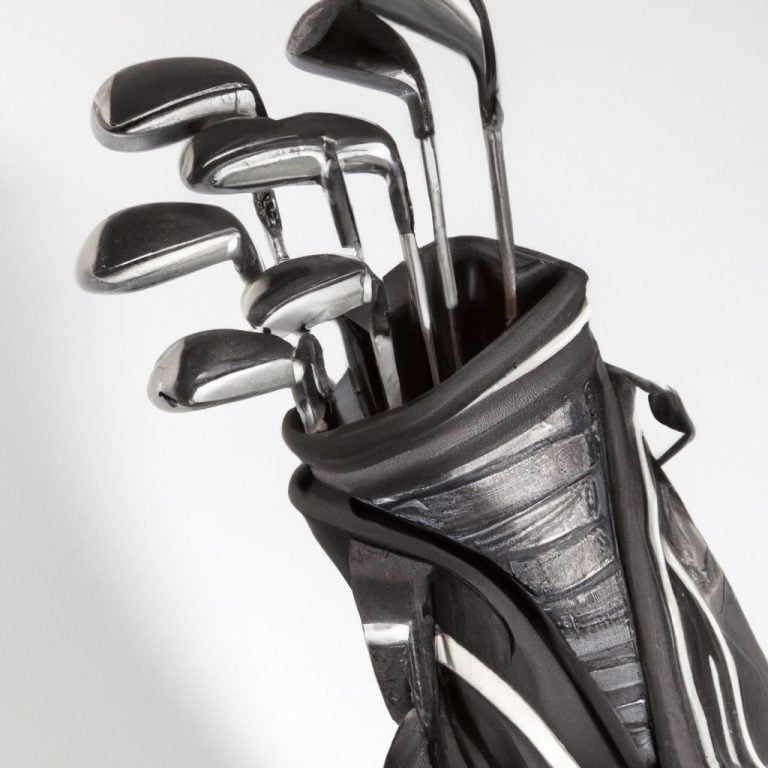Effective Strategies for Treatment and Prevention on How to treat golf elbow
Key Takeaways:
- Golfer’s elbow, also known as medial epicondylitis, is a condition caused by overuse of the muscles and tendons in the forearm leading to elbow joint pain and inflammation.
- Treatment options for golfer’s elbow include rest, self-care measures such as applying ice and using a brace, rehabilitation exercises to strengthen the affected area, medical interventions like corticosteroid injections, and prevention strategies like proper technique and warm-up.
- In severe cases or when conservative treatments fail, seeking professional help from a healthcare provider or physical therapist may be necessary to manage golfer’s elbow effectively.
Introduction
Golfer’s elbow, also known as medial epicondylitis, is a common condition that affects many golfers and athletes. In this section, we will explore the causes of golfer’s elbow and provide a brief overview of its symptoms and prevalence. Understanding the factors that contribute to this condition and recognizing its signs will help athletes and individuals seeking relief better manage and treat golfer’s elbow.
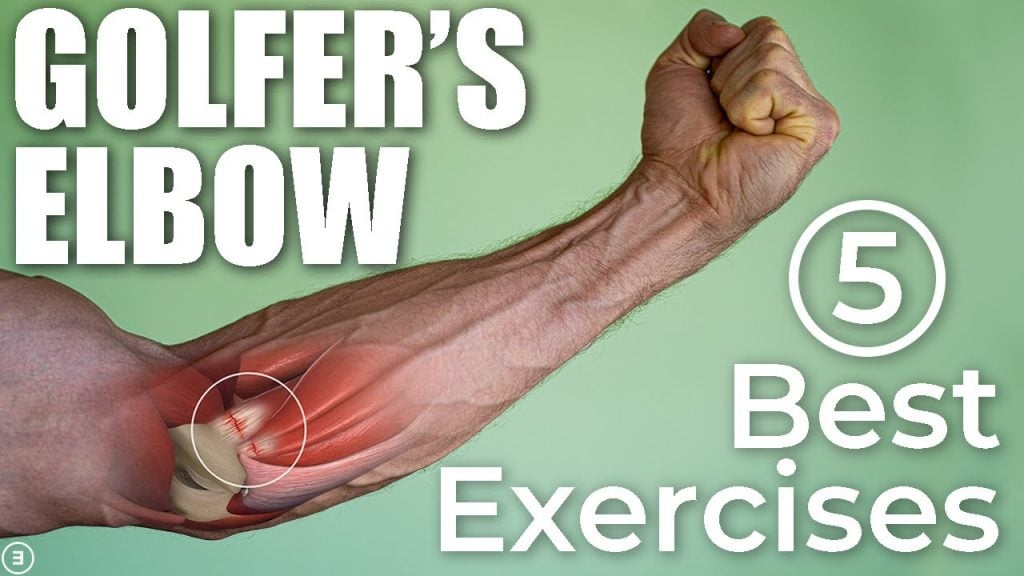
Explanation of golfer’s elbow and its causes
Golfer’s elbow is a condition known scientifically as medial epicondylitis. It is often caused by repetitive stress on the muscles and tendons in the forearm that are used for gripping and wrist flexion. Golf is the main cause, but tennis, weightlifting, and other sports can also contribute to it.
It is different from other conditions like tennis elbow and biceps tendonitis. Golfer’s elbow targets the tendons that attach to the medial epicondyle, which is the bony bump on the inside of the elbow.
Other causes of golfer’s elbow are incorrect technique and grip during sports and work activities. Heavy lifting can also be a risk. To prevent golfer’s elbow, it is important to understand the causes.
John had golfer’s elbow after playing golf regularly. He thought it was just soreness, but it got worse. Knowing the causes enabled him to change his swing and get treatment.
Understanding Golfer’s Elbow
Understanding Golfer’s Elbow: Discover the definition and description of this condition, along with key differentiating factors from similar conditions.
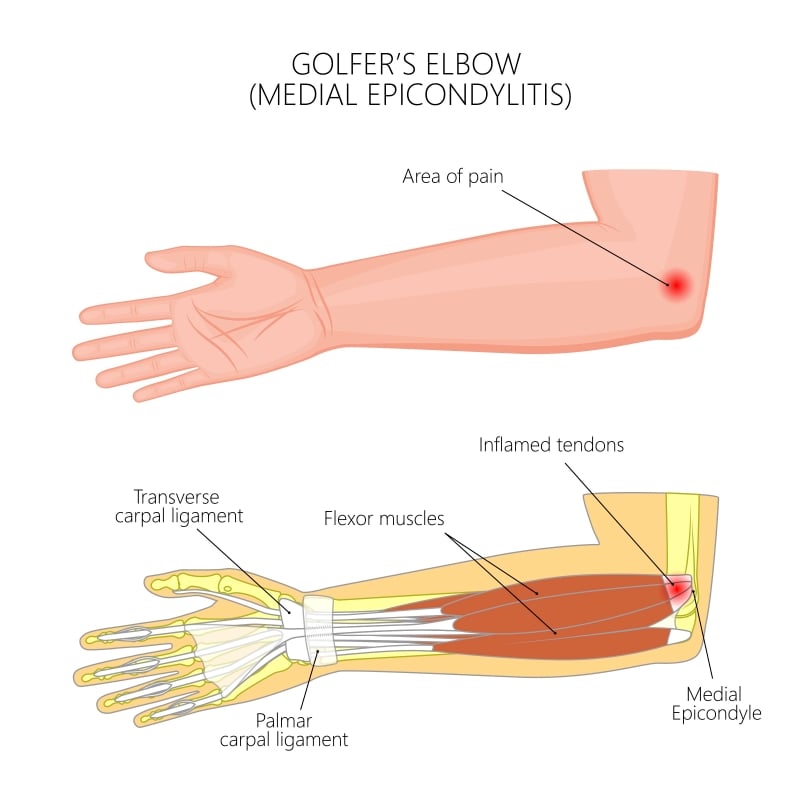
Differentiating golfer’s elbow from other similar conditions
Golfer’s elbow, also known as medial epicondylitis, is a condition characterized by pain and inflammation on the inner side of the elbow. It is distinct from other similar conditions. Symptoms include tenderness, swelling, limited range of motion, weak grip, and difficulty holding objects. Pain may also spread to the forearm or wrist.
In comparison to tennis elbow, golfer’s elbow affects the inner side. Also, it is caused by inflammation of tendons, not compression of nerves like radial tunnel syndrome. Golfer’s elbow is also different from ulnar collateral ligament injury, which results from trauma or repetitive stress on the ulnar side. Lastly, golfer’s elbow should not be confused with cubital tunnel syndrome, which involves compression or irritation of the ulnar nerve.
It is important to get professional help for effective treatment. Resting the arm and avoiding activities that aggravate pain can help. Applying ice packs can reduce inflammation, and using over-the-counter pain medications can provide temporary relief. Rehab exercises focusing on the wrist, forearm, and neck can also help. In severe cases, corticosteroid injections or surgery may be recommended.
Preventive measures like warm-up exercises, proper technique, and supportive braces can prevent future occurrences of golfer’s elbow. With a comprehensive evaluation and personalized treatment plan, individuals with golfer’s elbow can manage their condition and facilitate a faster recovery.
Treatment Options
When it comes to treating golf elbow, exploring the various treatment options is crucial. In this section, we will delve into the different approaches that can help alleviate the pain and promote healing.
From rest and self-care measures to rehabilitation exercises and medical interventions, we will cover a range of strategies tailored to address golf elbow effectively. Furthermore, we will also discuss preventive measures to minimize the risk of future occurrences. So, let’s dive into the comprehensive treatment options for golf elbow.
Rest and self-care measures
Golfer’s elbow, also known as medial epicondylitis, is a condition that affects the inner side of the elbow. It is usually caused by repetitive gripping or lifting activities, e.g. swinging a golf club or using tools. Symptoms include pain, tenderness, and weakness in the arm. It’s common among golfers and people doing activities with repetitive motions of the forearm and wrist.
Rest is crucial for managing golfer’s elbow. Avoid activities that worsen it. Ice can reduce pain and inflammation. Apply it for 15-20 minutes, several times a day. Taking over-the-counter pain medication, such as NSAIDs, may provide temporary relief.
Other treatments like rehabilitation exercises to strengthen the forearm and wrist muscles are beneficial. These exercises may include stretching the wrist, forearm, and neck muscles to improve flexibility. Corticosteroid injections and surgery may be needed in some cases.
Prevention measures include warming up before activities and using proper technique and braces/supports. Lifestyle factors such as physical fitness and avoiding repetitive motions can also help.
Consult a healthcare provider for an accurate diagnosis and treatment plan. Ask about the causes and risk factors specific to your case, and the expected recovery time. Seek emergency medical attention if you experience severe pain or sudden loss of function in the affected arm.
Rehabilitation and strengthening exercises
David had persistent pain in his elbow after playing golf for years, so he sought professional help. A tailored exercise program was created, involving flexion, extension, and rotation of the wrist. Also, forearm curls and pronation/supination movements to target forearm muscles. He also included neck stretches to reduce tension and strain.
Intensity was gradually increased as tolerated. Combining stretching with strengthening exercises helped maintain flexibility and build muscle strength. This balanced approach was David’s successful recovery from golfer’s elbow.
Every individual needs a personalized exercise plan. Seeking guidance from a healthcare provider or physiotherapist is essential for optimal rehabilitation outcomes.
Medical interventions
Golfer’s Elbow, also known as medial epicondylitis, causes pain and inflammation on the inner side of the elbow. It is caused by overusing muscles and tendons in the forearm, which control wrist and finger movement.
Medical interventions are available to help with this condition. These include corticosteroid injections, physical therapy, ultrasound therapy, acupuncture, and shockwave therapy. Severe cases of golfer’s elbow may need surgery. After surgery, rehabilitation is necessary, with strengthening exercises, stretching exercises, and a gradual return to normal activities.
It’s essential for individuals with golfer’s elbow to see a healthcare provider. Medical professionals can diagnose the condition and provide the right treatments. Early medical intervention helps to ease symptoms and avoid long-term issues associated with golfer’s elbow.
Prevention strategies
Golfer’s elbow prevention is essential for reducing risk. These strategies target the muscles and tendons in the forearm – used for gripping and swinging a club. Implementing these measures lets golfers enjoy the sport without harming their elbow.
Prevention Strategies:
- Warm-up exercises: Prep your muscles and tendons before playing. Gentle stretches for the wrist, forearm and neck can improve flexibility & mobility.
- Braces or supports: Wear around the affected area for stability & support during play. Eases pressure on tendons and reduces strain.
- Lifestyle factors: Physical fitness helps prevent overuse injuries. Avoid smoking and maintain a healthy weight.
Talk to a healthcare provider for personalized advice. They can provide guidance on technique, recommend preventive measures & assess underlying conditions that may contribute to golfer’s elbow symptoms.
Seek professional help to keep your golf game from being a pain in the arm!
Seeking Professional Help
For golf elbow, seeking professional help is essential. A qualified healthcare practitioner can provide guidance and treatment options to reduce pain and aid healing. They have the expertise to diagnose the condition and suggest interventions, based on its severity and an individual’s needs. It’s important to seek help early, as this can stop further problems and quicken the recovery process.
To address golf elbow, a physical therapist or orthopedic specialist can be consulted. They possess knowledge and experience in treating musculoskeletal injuries, such as golf elbow. They can create a treatment plan, including pain management techniques, rehabilitative exercises and ergonomic modifications. They can guide patients on the right technique and give equipment recommendations to avoid further strain.
Self-care and home remedies can give some relief, but professional help offers personalized care, focusing on the causes. Healthcare professionals can assess the golf swing and identify any areas that might be causing or keeping the problem. By looking at the root causes, they can help patients adjust their movements and stop future recurrences.
Healthcare professionals can also teach self-management strategies to help healing and stop reinjury. They can recommend specific strengthening exercises, stretches and lifestyle changes. They can explain the importance of warming-up and cooling-down, and advise on rest intervals.
Conclusion
Golf elbow is a common issue for golfers. Fortunately, there are various methods to help reduce pain and encourage healing. Stretching and physical therapy can be beneficial, as can applying ice and taking nonsteroidal anti-inflammatory drugs (NSAIDs). In more serious cases, corticosteroid injections may be recommended. To treat the condition, it’s important to also address the root cause, such as poor swing technique or improper equipment.
Additionally, it’s best to avoid activities that worsen symptoms and to give the affected arm a rest. Lastly, a brace or strap around the forearm can provide support and relief. By combining these treatments, you can manage and treat golf elbow. Remember to consult a healthcare professional for personalized advice. To conclude, taking the right steps can effectively help with golf elbow.
Some Facts About How To Treat Golf Elbow:
- ✅ Golfer’s elbow, or medial epicondylitis, causes pain and inflammation in the tendons connecting the forearm to the elbow. (Source: WebMD)
- ✅ Treatment for golfer’s elbow typically involves managing it like any other overuse injury, such as applying ice, resting, and taking oral NSAIDs or using topical medications to reduce pain and swelling. (Source: WebMD)
- ✅ Exercises such as wrist extensor stretch, forearm extensor stretch, wrist flexor stretch, wrist curls, resisted wrist extension, resisted wrist flexion, and neck stretch to the side can help with recovery from golfer’s elbow. (Source: Healthline)
- ✅ Resting, using heat and ice treatment, taking pain relievers, and wearing counterforce braces or compression bandages can also help with symptoms of golfer’s elbow. (Source: Healthline)
- ✅ If symptoms persist or worsen, it is important to consult a doctor for examination, diagnosis, and possible treatment options, including injections or physical therapy. (Source: Cleveland Clinic)
FAQs about How To Treat Golf Elbow
1. What are the right techniques for treating golfer’s elbow?
The right techniques for treating golfer’s elbow may include activity modification, rest, and specific exercises to strengthen and stretch the affected muscles. It is important to avoid aggravating movements and adjust sports equipment and technique to prevent further strain on the elbow.
2. What is the medical term for golfer’s elbow?
The medical term for golfer’s elbow is medial epicondylitis. It refers to the inflammation and pain in the tendons connecting the forearm and elbow that are typically caused by repetitive use or overuse of the wrist and arm.
3. How can a damp towel be used to relieve pain in golfer’s elbow?
A damp towel can be used as a cold compress to help reduce pain and inflammation in golfer’s elbow. Simply wrap a bag of ice or a cold pack in a damp towel and apply it to the painful area for about 15 minutes at a time.
4. Can using a tennis racquet cause golfer’s elbow?
Yes, using a tennis racquet can potentially cause golfer’s elbow due to the repetitive flexing and twisting motions involved in the sport. However, golfer’s elbow can also be caused by a variety of activities that involve repetitive gripping or throwing movements.
5. What is the role of the nurse advice line in managing golfer’s elbow?
The nurse advice line can provide guidance and support for managing golfer’s elbow. If experiencing problems or need advice, it is recommended to call the nurse advice line for assistance and appropriate recommendations.
6. How can resisted wrist extension exercises help with golfer’s elbow?
Resisted wrist extension exercises can help strengthen the muscles in the forearm and promote recovery from golfer’s elbow. These exercises involve resisting or pushing against an opposing force while extending the wrist, which can build strength and improve flexibility in the affected area.
